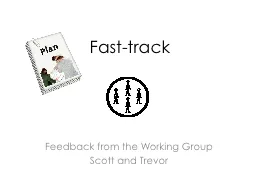PPT-USING PYTHON AND VISUAL PYTHON TO TRACK HEALTH
Author : trish-goza | Published Date : 2016-08-16
BY CHASE FORTIER Background on python Python is a programming language developed in the 1980s by Guido Van Rossum in the Netherlands The first code was released
Presentation Embed Code
Download Presentation
Download Presentation The PPT/PDF document "USING PYTHON AND VISUAL PYTHON TO TRACK ..." is the property of its rightful owner. Permission is granted to download and print the materials on this website for personal, non-commercial use only, and to display it on your personal computer provided you do not modify the materials and that you retain all copyright notices contained in the materials. By downloading content from our website, you accept the terms of this agreement.
USING PYTHON AND VISUAL PYTHON TO TRACK HEALTH: Transcript
Download Rules Of Document
"USING PYTHON AND VISUAL PYTHON TO TRACK HEALTH"The content belongs to its owner. You may download and print it for personal use, without modification, and keep all copyright notices. By downloading, you agree to these terms.
Related Documents









![[READING BOOK]-Illustrated Guide to Python 3 A Complete Walkthrough of Beginning Python](https://thumbs.docslides.com/970240/reading-book-illustrated-guide-to-python-3-a-complete-walkthrough-of-beginning-python-with-unique-illustrations-showing-how-python-really-works-now-covering-python-3-6-treading-on-python.jpg)
![[FREE]-Python 3 Books in 1 Python Basics for Beginners + Python Automation Techniques](https://thumbs.docslides.com/970325/free-python-3-books-in-1-python-basics-for-beginners-python-automation-techniques-and-web-scraping-python-for-data-science-and-machine-learning.jpg)
![[BEST]-Python: 3 Books in 1: Python Basics for Beginners + Python Automation Techniques](https://thumbs.docslides.com/974940/best-python-3-books-in-1-python-basics-for-beginners-python-automation-techniques-and-web-scraping-python-for-data-science-and-machine-learning.jpg)
![[eBOOK]-Python for Beginners: A Smarter Way to Learn Python in 5 Days and Remember it](https://thumbs.docslides.com/975240/ebook-python-for-beginners-a-smarter-way-to-learn-python-in-5-days-and-remember-it-longer-with-easy-step-by-step-guidance-and-hands-on-examples-python-crash-for-beginners-easy-python-book-1-6409338e488f0.jpg)
